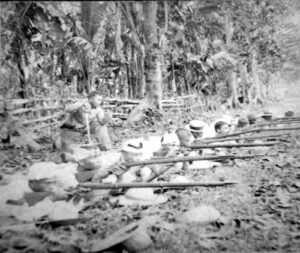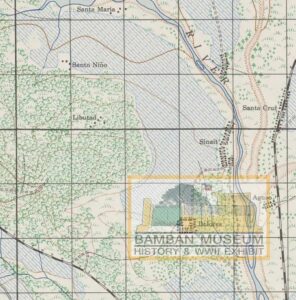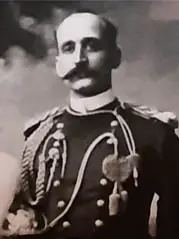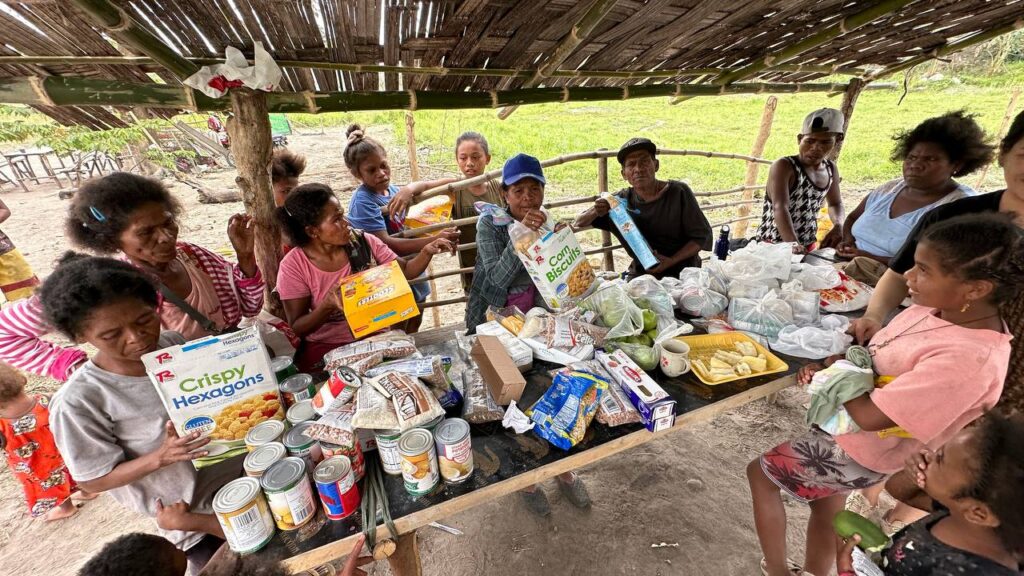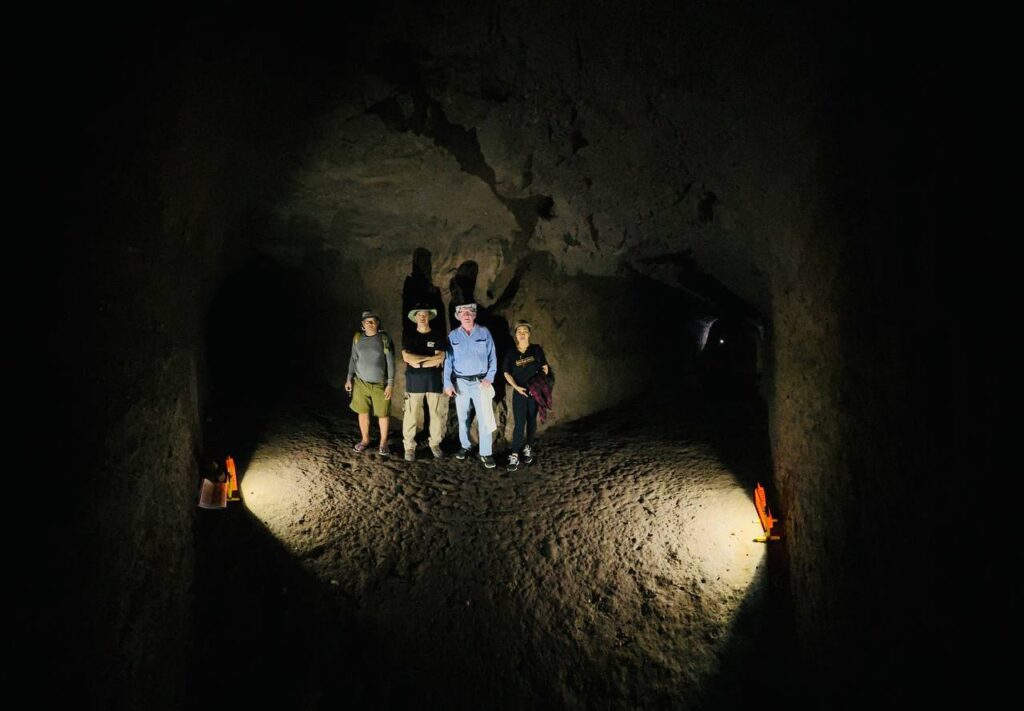Copyright 2020 Bamban Historical Society Bamban Museum of History
“Matakot sa kasaysayan, pagka’t walang lihim na di’ nahahayag.” Gregoria de Jesus
Philippine-American War is considered by many, as the forgotten war. Simply the history of that dark episode in our nation in the fight for freedom and national sovereignty has not been published especially in the provinces. At present, little is known about the extent of such history, that historians and researchers as well as students of history should consider to cover and research Philippine-American War in our local as well as national history. Before WWII, our relationship with America had been bloody beginning at the turn of the century with the outbreak of hostilities on February 4, 1899. The war was carried out in the provinces, in Central Luzon, following the path of the railroad line from Pampanga (May to early November 1899) and into Tarlac (November 11 into the 1900). With the dissolution of the Philippine Army by General Aguinaldo at Bayambang, Pangasinan on November 13, 1899, the fight against the Americans was turned into guerrilla warfare; small bands of local militias with revitalized Katipunan movement in the towns and provinces. It turned out that this kind of war was more potent than in the Fabian strategy of our Army of Liberation, that the US was forced to garrison each and every town in Luzon. The 9th US Infantry of the 1st Brigade, 2nd Division, 8th US Corps was stationed in Tarlac province with companies assigned on several of the towns.
And that part of lost history is the Tinuba Incident happened exactly 120 years ago. The killing of suspected Filipino revolutionaries and burning of the barrio had been lost to history. The barrio Tinuba itself had vanished to history, for after the Philippine-American War, the name was lost, never to be seen on the official US Army maps and the name replaced thereafter in the succeeding official NAMRIA maps. The author was able to secure the necessary historical facts, reports and information based mainly on the official US Army records. In an attempt to get a wider perspective of the events, the author tried to avail of any primary source or material related to the side of the Filipino accounts on the incident but to no success.
The Tinuba Incident
On March 4, 1899, American troops from the Company K, 9th US Infantry (the same infantry that fought the Filipino Revolutionaries in Bamban on November 11, 1899) under the command of Captain Sigworth killed 24 suspected Filipino guerrillas held as prisoners in the plaza of barrio Tinuba, and thereafter burned the whole village. A day Prior the incident, Captain Sigworth, accompanied by 1st Lieutenants Edgar Koehler, Hammond, Wallace of the detached Company K and H under the captain was sent to Barrio Tinuba, Tarlac, Tarlac to search for the arms of the Filipino guerrillas in command by Gavino Calma, that was reported by an informant in the name of Alfonso Ramos (the former governor of Tarlac province, to be re-elected again in 1904) during the reconnaissance missions in Sapang Maragul located 6 miles south of the Tinuba. The rationale behind the punitive search was that 33 Krag-Jorgensen rifles were stolen by Filipinos from Company H, 9th US Infantry under the command of Lieutenant Hammond stationed in Tarlac, Tarlac and that reconnaissance missions were sent to the vicinity areas in search of these stolen rifles as early as January 4, 1899.
It was Alfonso Ramos, made known to the officers of the 9th US Infantry in Tarlac, Tarlac, of the existence of guerrilla forces in Tinuba commanded by a Gavino Calma. A reconnaissance mission led by the mounted detachment of 9th US Infantry with Lieutenant Koehler in Tinuba on February 28, 1900 in search of the arms and Gavino Calma’s guerrilla forces proved unsuccessful, but were able to captured Remington and Winchester rifles in Sapang Maragul with the aide of the informant.
Another punitive search and destroy mission was undertaken on March 3, 1900, sending Company H and K, 9th US Infantry under the command of Captain Sigworth, with two Filipino informants; Alfonso Ramos, the former governor of Tarlac and Geronimo Vasa Batac who was a sergeant in the local police force and later identified as a liaison officer between the Tarlac town president and General Makabulos. The detachment reached the barrio in the evening, holding the inhabitants. Company K, with 50-men and two local informants including the former governor Alfonso Ramos, was assigned in the barrio while Company H was outside the settlement acting as guard force. The next morning, all the natives numbering 160 were rounded and formed in 2 lines, and the two Filipino spies, including Alfonso Ramos, pick-out the 29 out of the crowd and identified as Filipino soldiers of the Army of Liberation. The event was synonymous to the Makapili style of identifying guerrillas during the Japanese Occupation, predating it some 42 years earlier. Alfonso Ramos, who was with the 9th US Infantry detachment, along with Geronimo Batak, identified the 29 Filipinos as local “insurgents”, where they were herded in an open space near the plaza as prisoners of war. A high-ranking officer of the Army of Liberation, Colonel Pedro Nolasco (Velasco on other report) Liongson, a native of Bacolor and was an official in the Corps of the Military Justice was also taken.
The Killing of 1st Lieutenant Koehler and the Massacre of Filipinos
The American mounted detachment at Tinuba was eager to get the rifles of the Filipino prisoners held in confinement. One of the Filipino prisoner led 1st Lieutenant Koehler and Lieutenant Wallace into the forest outside of the barrio confines about less than a kilometer to the northwest, to get his rifle but the two American officers were ambushed by Filipino guerrillas hiding in the woods and fired 10 volleys at 8 in the morning. 1st Lieutenant Koehler was wounded severely, only to die an hour later at barrio Tinuba while Lieutenant Wallace went back to the American detachment to report the ambush. At the very same time while the volleys of rifle shots were fired into the American officers, the suspected Filipino “insurrectos” being held by Americans, upon hearing the sounds of the rifle shots, ran away from the line in the direction of the woods behind the nipa houses. Upon seeing the break-away, Captain Sigworth gave the order to the 2 infantry squads in the plaza to shoot the Filipino prisoners trying to escape. The American troops were aware of the order given even before the shooting that in case of escape of the prisoners, they were given orders for shoot-to-kill. 24 Filipinos lay dead in the aftermath of the shooting.
The Burning of Barrio Tinuba
Captain Sigworth with troops went to the place where 1st Lieutenant Koehler was ambushed and finding the Filipino guerrillas had already gone. Several nipa huts and troops barracks were found in the forest outside the barrio, where Captain Sigworth torched them. Captain Sigworth came into conclusion that barrio Tinuba was a Filipino military camp and ordered the American troops to burn the village to the ground, in an obvious act of revenge for the death of 1st Lieutenant Koehler. 13 Filipinos were taken by Captain Sigworth as prisoners of war, with Colonel Liongson of the corps of military justice. The body of 1st Lieutenant Koehler was taken to Manila, where the remains were escorted by his brother Benjamin Koehler who was an artillery officer in the US Army in the Philippines. The fate of the 13 Filipino prisoners, along with the Kapampangan Colonel Liongson were not known after their arrest.
A History Forgotten
The Tinuba Incident, is just one of the forgotten and dark episodes in the history of Philippine-American War. The Filipino troops under Colonel Liongson stationed at the barrio were part of the remnants of General Makabulos command who carried on the guerrilla warfare as manifested in the Bayambang Declaration decreed by General Aguinaldo on November 13, 1899. The 24 Filipino guerillas who were killed as prisoners are yet to be identified. A fitting memorial to these brave Filipinos with Colonel Liongson, the son of Bacolor, Pampanga as well as a national historical marker should be erected at the former barrio of Tinuba on what appears on post-Philippine American War and American colonial period as barrio Libutad. Jarrett Robinson, an American doing research on Philippine-American War, whom I made commination, provided a map of Barrio Tinuba dated in 1900 as the site of the killing of Lieutenant Koehler. In the post-Tinuba Incident, Lieutenant George W. Wallace, the officer who was with Lieutenant Koehler during the ambush, was awarded the US Medal of Honor while Lieutenant Hammond was court-martialed for the loss of the Krag-Jorgensen rifles in Tarlac, Tarlac.
Alfonso Ramos, who was formerly with the Filipino Revolutionary Government (after General Makabulos), was recommended for payment of $60 Mexican dollars by no less than the regimental commander of the 9th US Infantry for his services as informant on the capture of Remingtons and Winchester rifles in Sapang Maragul on March 3, 1899. In the election of March 1904, he won the election as the governor of Tarlac province. The town of Ramos, Tarlac was named in his honor in 1921 as a fitting memorial for his initiation in the creation of said town out of the mother town of Paniqui. His role in the Tinuba would be forgotten in the collective memory of the people, except this day, 120 years ago, that we at Bamban Historical Society will remember. The Tinuba Incident had some similarity with the Balangiga Conflict that happened on September 28, 1901. We hope that the Tinuba, a dark page in our Nation’s history of the Philippine-American War, shall never be forgotten.
*Our sincere appreciation to Mr. Jarrett Robinson for providing additional information on the Tinuba Incident.
Rhonie C. Dela CruzBamban Museum Bamban Historical Society
Major References
-Report No. 29, Headquarters Second Division, 8th Corps, Bautista, March 5, 1900-Report No. 210, Report of Captain Sigworth, 9th US Infantry, Tinuba, March 4, 1900-Report of Colonel Liscum, at Paniqui, to General MacArthur; March 3, 1900-Reports of Colonel Liscum, at Paniqui, to General MacArthur; March 3, 1900-Lt.Col. Chas Coolidge, Report No. 210a, Headquarters 9th US Infantry, Tarlac PI, March 7, 1900-Report to General Wheeler of the Progress of Civil
(a) Government at Tarlac, January 14, 1900.Annual Reports of the War Department for the Fiscal Year Ended June 1900. Report of the Lieutenant General Commanding the Army. Washington – Part 6: Government Printing Office, 1900.
(b) Robinson, Jarret. “Tinuba, Koehler”. Message to Rhonie Dela Cruz. 1 January 2020. E-mail.
(c) Robinson, Jarret. “Tinuba, Koehler”. Message to Rhonie Dela Cruz. 14 January 2020. E-mail.
(d) Lieutenant George Wallace. http://peacememorial101.org/moh/george_w_wallace.html. Accessed March 4, 2020.
(e) Ramos, Tarlac. https://en.wikipedia.org/wiki/Ramos,_Tarlac. Accessed March 4, 2020.
Maps
Map showing Barrio Tinuba in Tarlac, Tarlac, circa 1900; from Lieutenant Koehler’s File, Jarrett Robinson Collection.Sheet No. 3257 I – GERONA, Luzon AMS S712, Chief of Engineers, US Map Service, US Army, Washington D.C., 1944 (compiled from Philippine Department, 1927/1920), US National Archives NARA, College Park, Maryland, Bamban Historical Society Collection, Bamban, Tarlac.Sheet No. 7174 III GERONA 1977, National Mapping & Resource Information Authority NAMRIA, Department of Environment and Natural Resources DENR, Fort Bonifacio, Makati, 2007.
Sheet No. 3132 III GERONA 1-October-2007, National Mapping & Resource Information Authority NAMRIA, Department of Environment and Natural Resources DENR, Fort Bonifacio, Makati, 2007.
Photos
(1) Reports of Colonel Liscum of the 9th US Infantry to General MacArthur in March 3 and March 4, 1900; of the information on the killing of Filipino prisoners and the burnng of barrio Tinuba, Tarlac on March 4, 1900 by Captain Sigworth.From Annual Reports of the War Department for the Fiscal Year Ended June 1900. Report of the Lieutenant General Commanding the Army. Washington – Part 6: Government Printing Office, 1900.
(2) Photo of 1st Lieutenant Edgar Koehler, Company K, 9th US Infantry. Courtesy of Jarrett Robinson.
(3) Filipino troops in the firing line, circa 1900. Credit to owner of the image.
(4) Map sourced in post Philippine-American War, showing that barrio Tinuba was erased and a new name, Libutad appeared. US Army Map.

From Annual Reports of the War Department for the Fiscal Year Ended June 1900. Report of the Lieutenant General Commanding the Army. Washington – Part 6: Government Printing Office, 1900.
